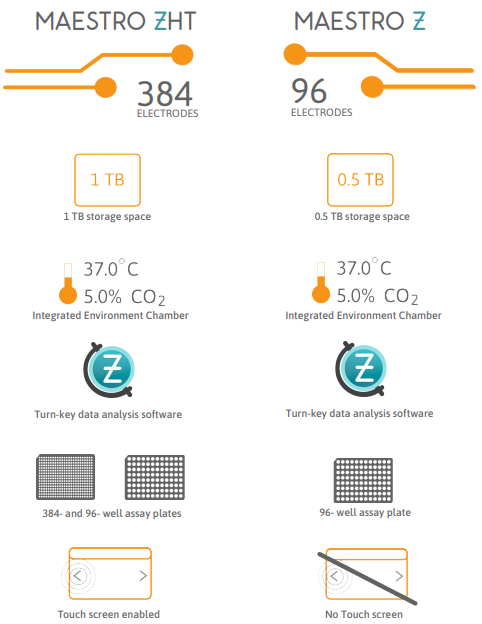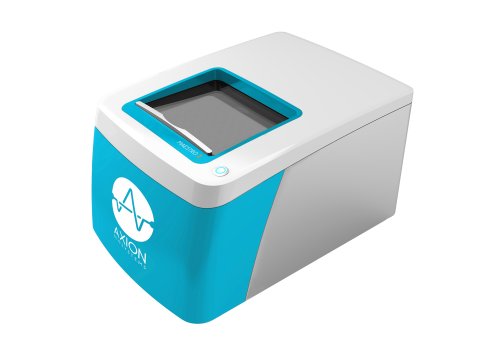Track cell proliferation, morphology, and viability label-free and in real time
Cell-based assays enable rapid evaluation of human biology in vitro, with substantial advantages in throughput and cost over tissue or animal models. However, many cell-based assays are endpoint assays, limited to a single snapshot in time. Axion BioSystems’ Maestro Z platform offers impedance-based cell analysis for real-time, continuous, label-free monitoring of your cells. Continuous data reveals the kinetics of cell-cell interactions and cell-drug responses for better mechanistic understanding without the time- and cost-intensive process of repeating multiple endpoint assays.
Measure proliferation, morphology, and viability in real time
Getting started with Maestro Z couldn’t be easier. Culture your cells in an Axion multiwell CytoView-Z plate. Load this plate into the Maestro Z system and allow the environmental chamber to automatically equilibrate. Analyze changes in cell proliferation, morphology, and viability in the CytoView-Z plate label-free and in real time with AxIS Z software.

How Maestro Z works
Axion’s 96-well CytoView-Z plates have a recording electrode embedded in the culture surface of each well (1). The Maestro Z platform uses impedance measurements (ohms, Ω) to quantify the presence of cells on the electrode (2). To measure impedance, small electrical signals are delivered to the electrodes. Cell attachment, spreading, and cell-cell connections block these electrical signals and are detected as an increase in impedance. Impedance is also sensitive to subtle changes in cell conformation, such as those caused by receptor-mediated signaling or cell morphology. Since impedance is non-invasive and label-free, impedance assays can be used to quantify dynamic cellular responses over minutes, hours, and days.

Impedance measures how much electrical signal (orange arrows) is blocked by the electrode-cell interface (3). When the electrode is uncovered, electrical signal easily passes and the impedance is low. When cells cover the electrode, less electrical signal passes and impedance is high. When cells die or detach, the impedance decreases back towards baseline (4).

Discover dynamic cytotoxic responses
When testing a new drug or cell therapy, endpoint assays can tell you whether the cells are dead or alive at a given time but they don’t show how they got there or where they are going. With non-invasive, continuous monitoring, the Maestro Z captures the entire time course of cell death, revealing not only the degree, but the kinetics of the response. Often, the kinetics of the cellular response give the most insight into the efficacy and mechanism of a compound.
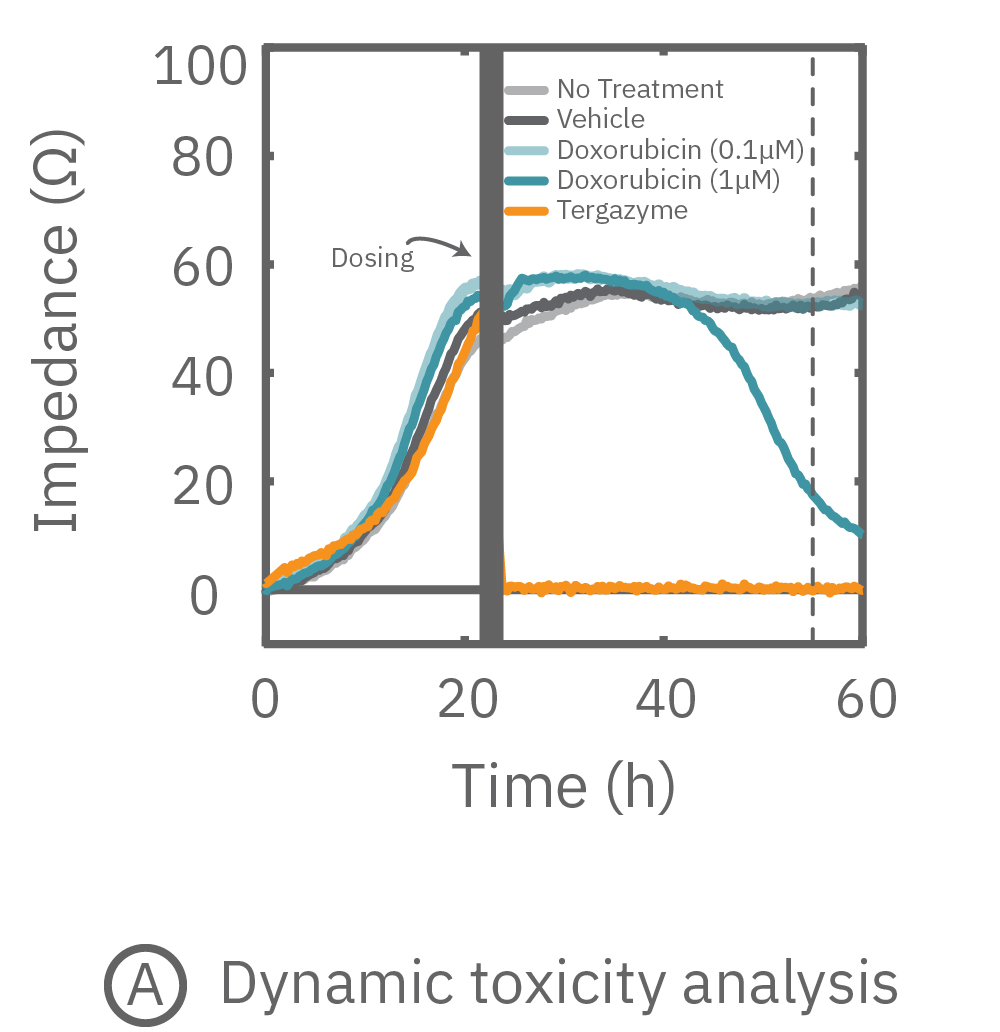
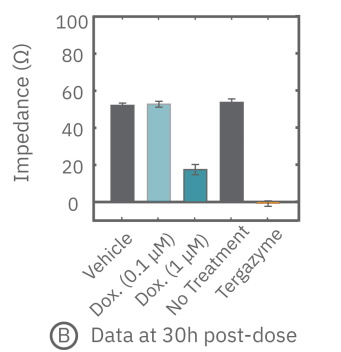
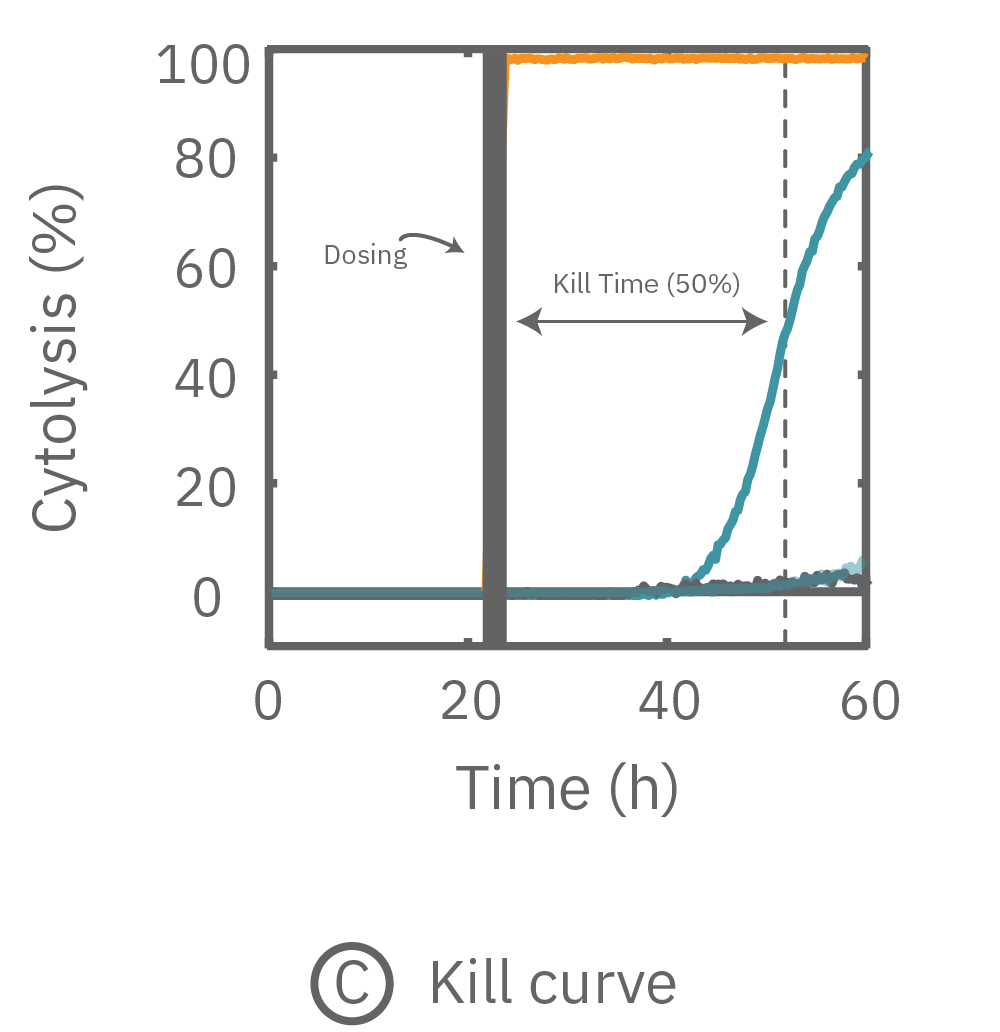
(Left) After application of doxorubicin (Dox.), the impedance measurements revealed the dynamic response of the A549 cells compared to (middle) the single time point values shown at the dotted line. (Right) Using on-plate controls for cell growth (No Treatment Control) and cell death (Tergazyme), the percent cytolysis was tracked in real time throughout the time course of the response.
Track immune cell-mediated killing
Glioblastoma (GBM) is an aggressive form of brain cancer that has no effective treatments and a prognosis of only 12–15 months. Immune system effector T cells hold promise for future cancer therapy due to their high specificity and innate cytotoxicity. The Maestro Z impedance assay provides a sensitive, label-free, nondestructive method to continuously monitor cancer cell proliferation and immune cell-mediated cytotoxicity, providing a powerful means of assessing immune cell potency
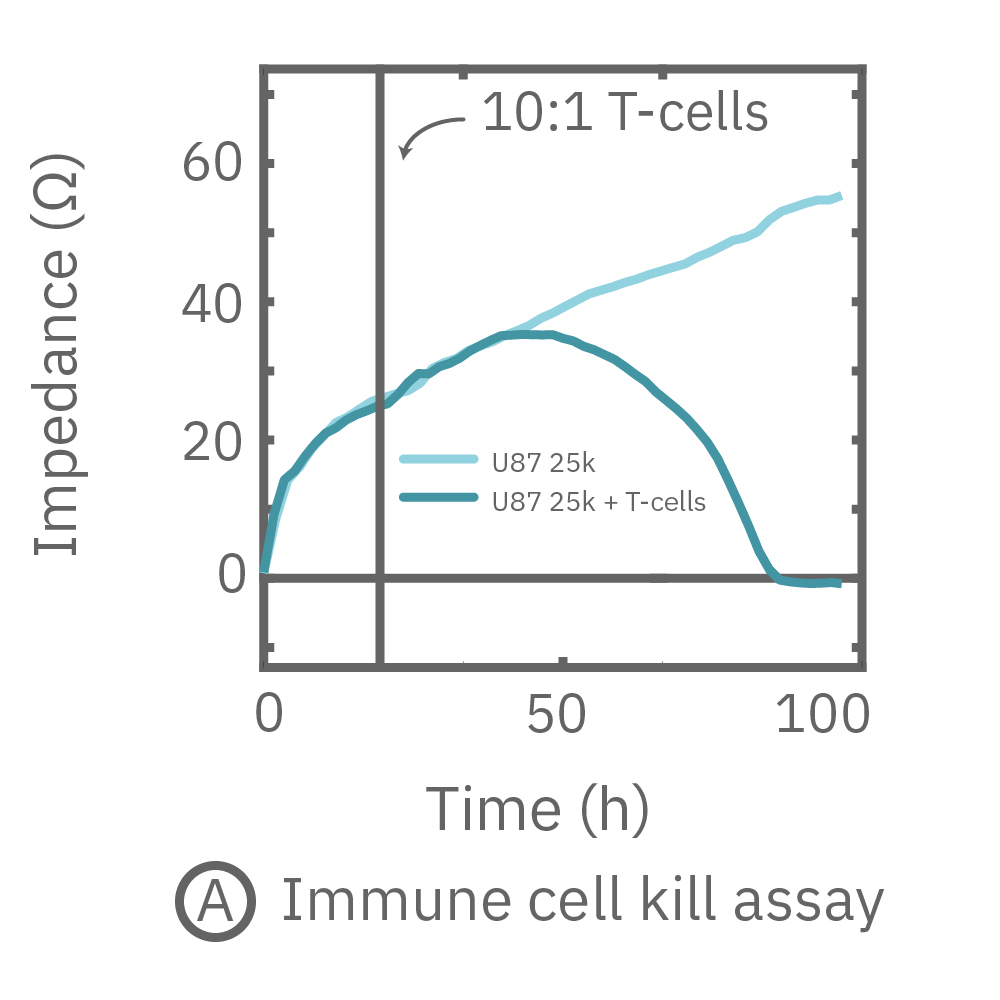
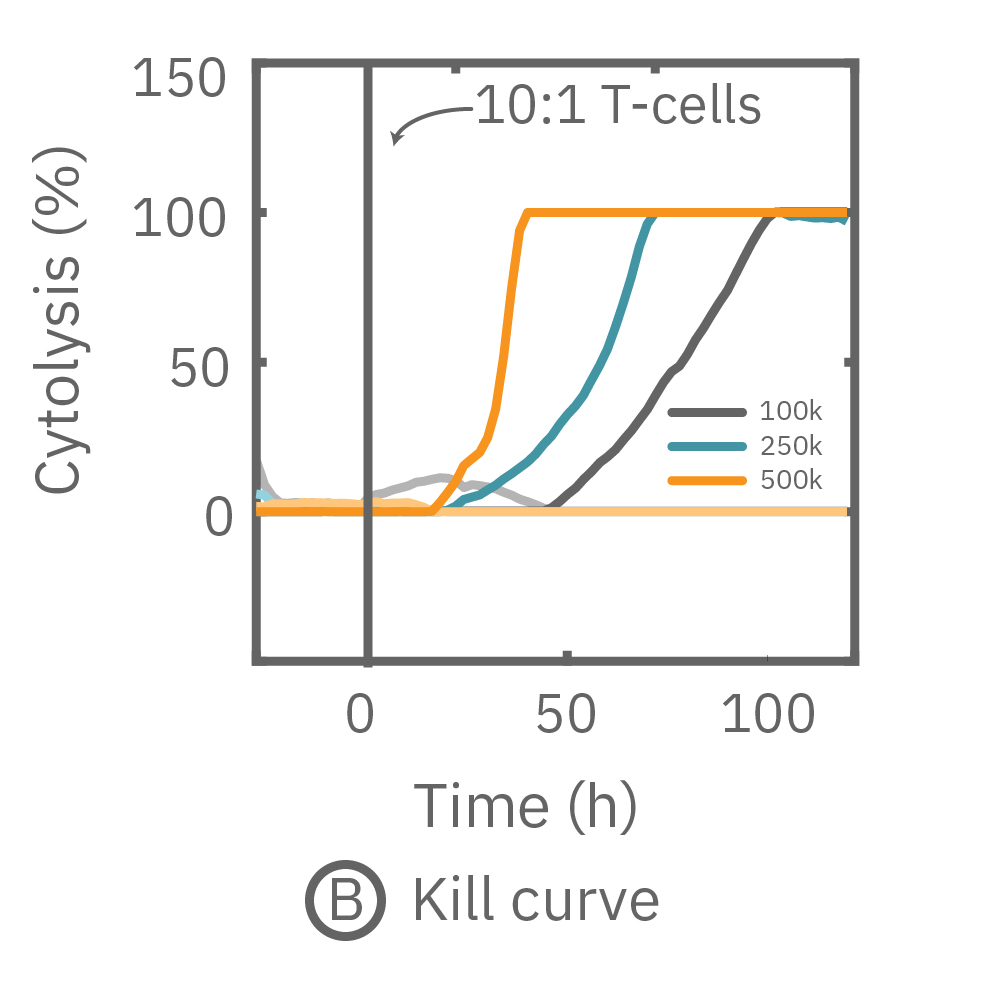
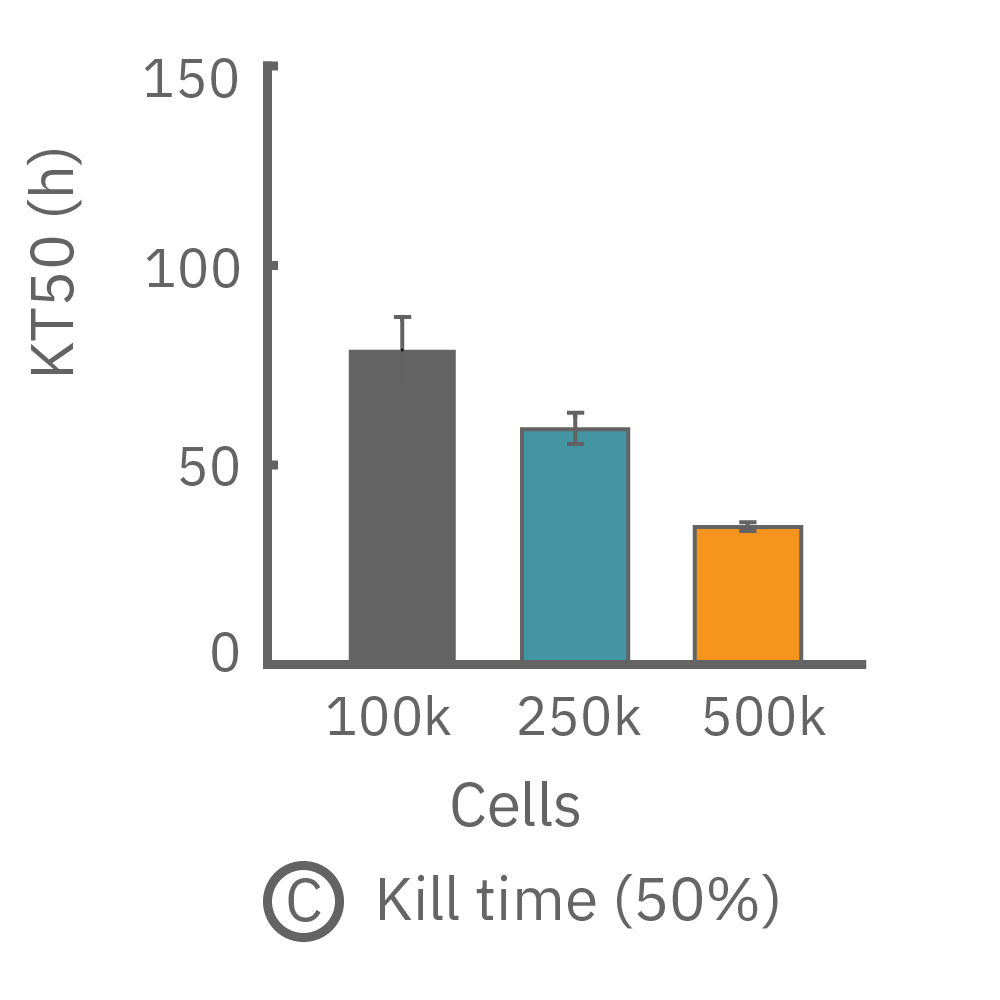
(Left) U87MG glioma cells were seeded into the CytoView-Z plate at three different densities (n=12) and impedance was continuously monitored on the Maestro Z. After 24 hours, activated human T cells were added in a 10:1 ratio to each well (n=4 wells for each cell density). The addition of activated human T cells resulted in a decrease of the impedance signal consistent with T-cell-mediated lysis of the U87 cells, while untreated wells continued increasing, as shown for 25,000 U87 cells. (Middle) Percent cytolysis was tracked in real time, enabling computation of kill time 50% (KT50) for each density. (Right) A higher density of T cells led to faster killing of U87 cells.
Monitor rapid receptor-mediated signaling
Cell-signaling pathways communicate messages from outside the cell. When extracellular signaling molecules bind receptors on the cell surface, they initiate signaling events inside the cell that determine cell behavior. G-protein-coupled receptors (GPCRs) are the largest class of transmembrane receptors. GPCR binding results in conformational changes and downstream responses that can be measured by impedance. These small changes often occur rapidly, but can last minutes to hours with significant physiological consequences. The Maestro Z has the sensitivity to continuously measure these small changes and assess their kinetics without disturbing the cells.
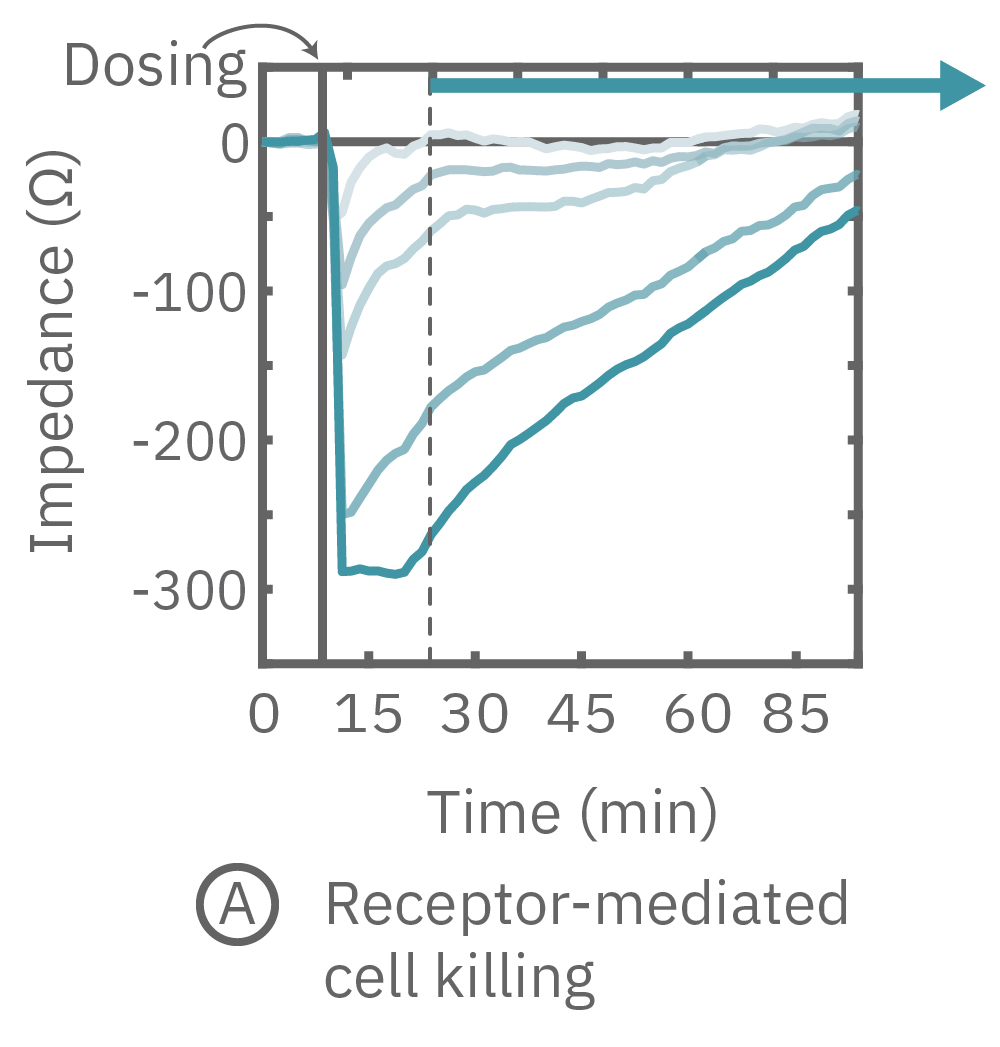
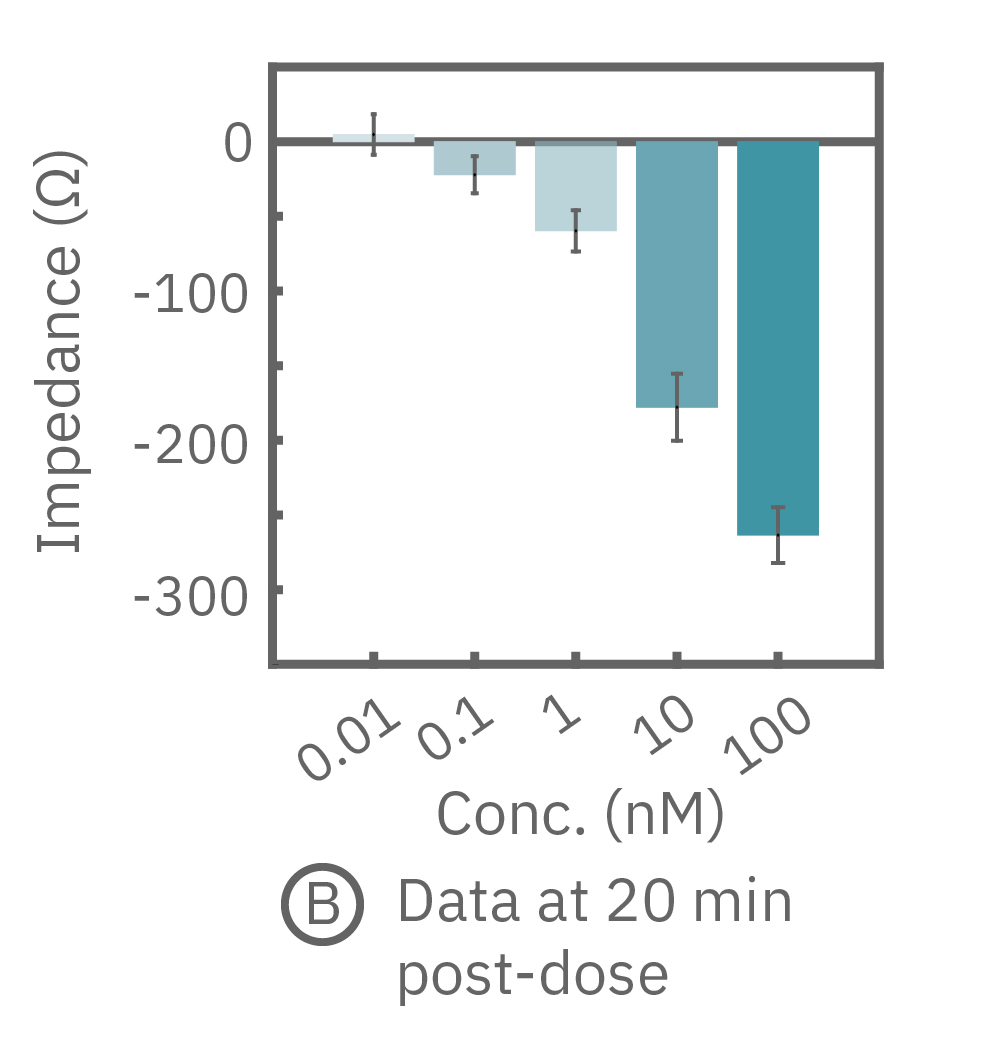
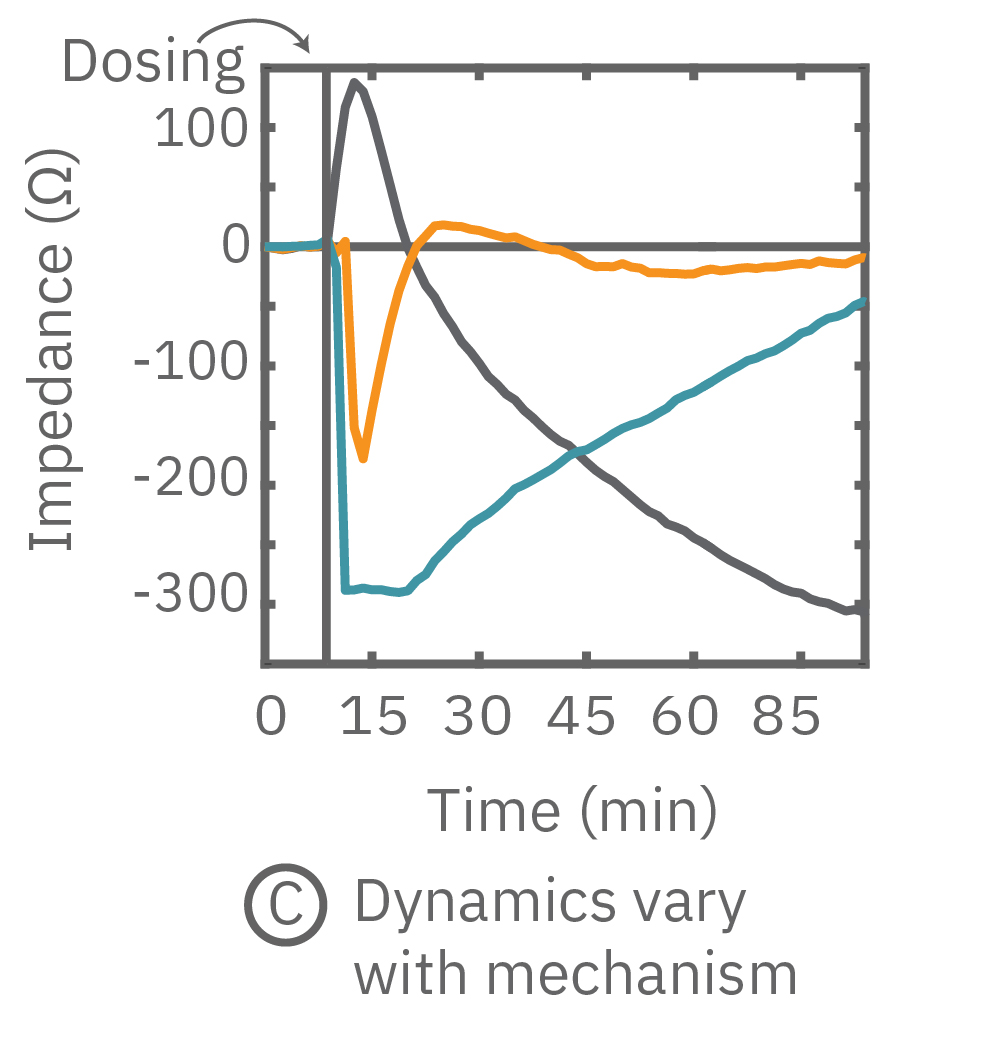
(Left) Calu-3 cells dosed with isoproterenol (teal), a potent beta-adrenergic receptor agonist, revealed a short-term, dose-dependent decrease in impedance. (Middle) At 20 minutes post-dose, the cells dosed with the highest concentration showed the lowest impedance, while cells dosed with the lowest concentration had already returned to baseline. (Right) Cell-signaling dynamics varied with compound mechanism. Histamine (orange, 100 µM) showed a short, rapid decrease in impedance while cytochalasin D (gray, 10 µM ) increased and subsequently decreased in impedance.
Evaluate barrier function with TEER
The barrier properties of cells, like those that comprise epithelium and endothelium, serve critical functions throughout the human body and may be disrupted by diseases, such as cystic fibrosis. Calu-3 is an immortalized epithelial cell line that produces tight junctions and expresses functional cystic fibrosis transmembrane conductance regulator (CFTR) protein. Upon β-adrenergic stimulation, ions transport across the cell membrane to facilitate mucus secretion. Here, transepithelial electrical resistance (TEER) measurements quantify the function of CFTR, a protein disrupted in cystic fibrosis.
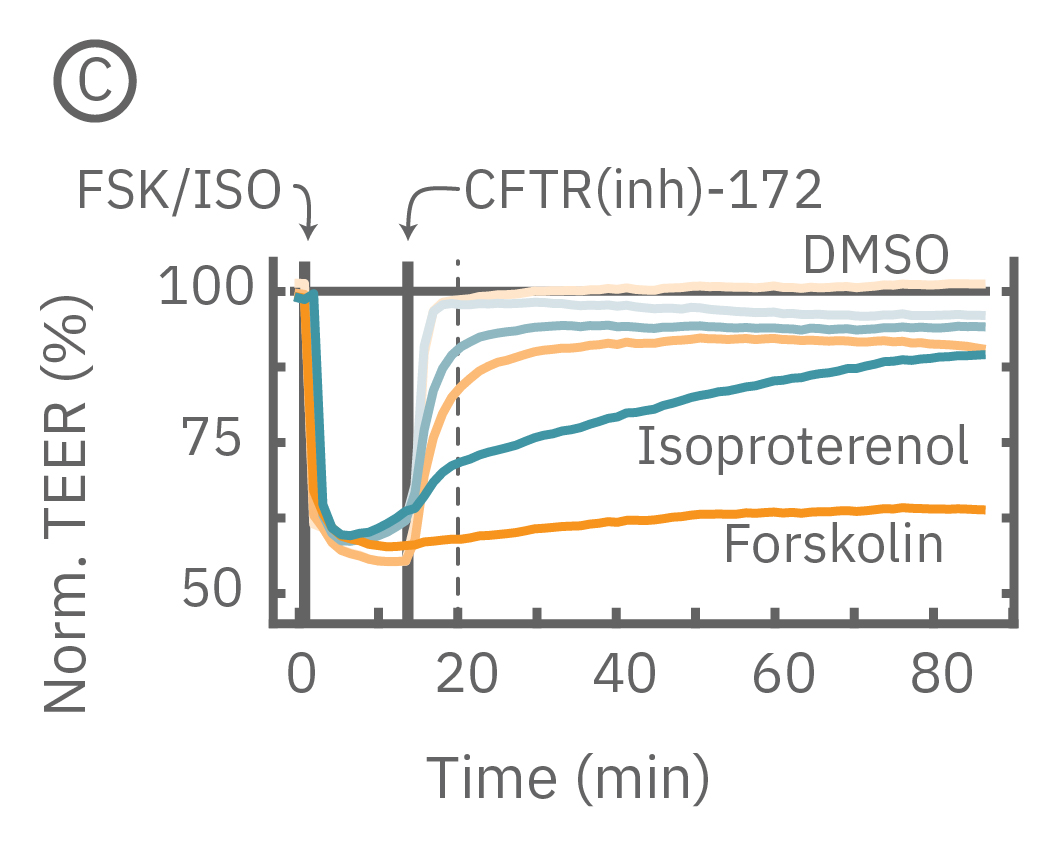
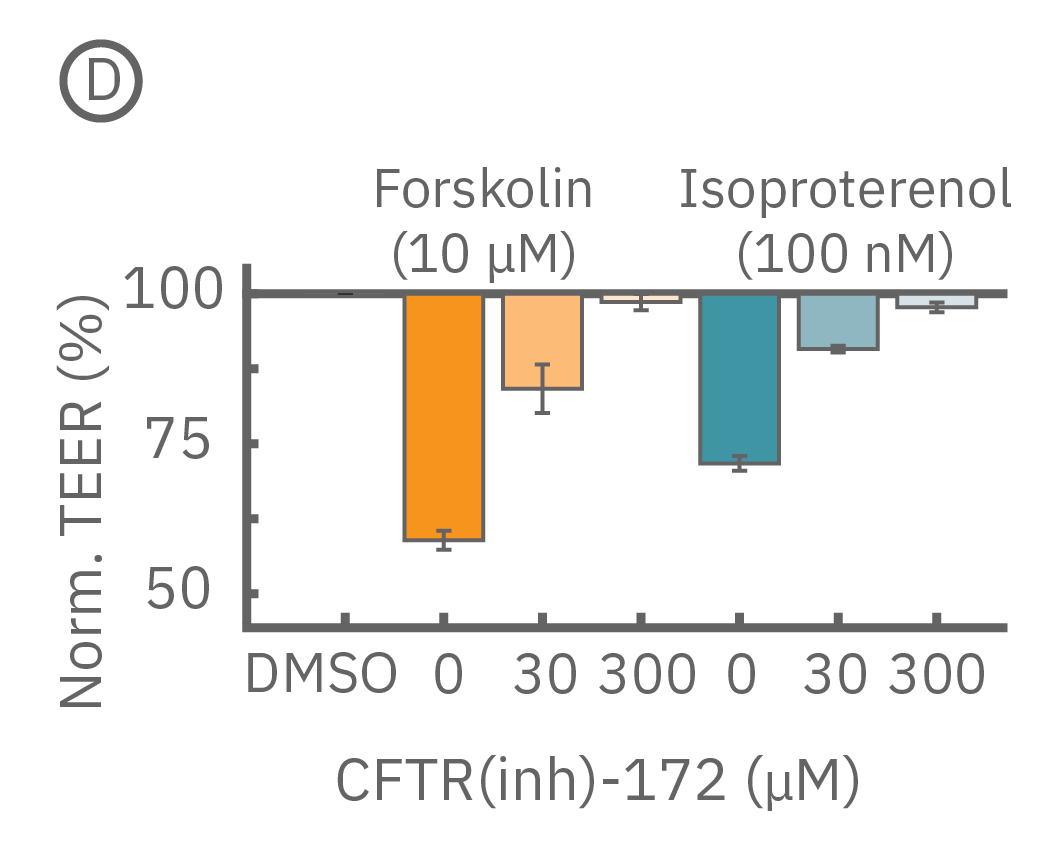
(Left) Isoproterenol (teal, 100 nM) and forskolin (orange, 10 µM) addition significantly reduced TEER in Calu-3 cells prior to the addition of CFTR(inh)-172 (grey line, 30 and 300 µM). (Right) Five minutes after the addition of CFTR(inh)-172, a dose-dependent reversal of the isoproterenol and forskolin responses was observed.
Taking care of your assay so you can focus on the science
The Maestro Z system is the world’s most advanced electrode-based real-time cell analysis system. Featuring a newly designed environmental chamber, high-throughput plates, and the next generation in data acquisition and analysis software, Maestro Z is the complete platform for real-time cell analysis.
One button setup - Temperature and CO₂ levels automatically adjust on plate docking. Plate usage is logged via an integrated plate barcode scanner for convenient experiment tracking.
Maestro Z App - Monitor your experiments from outside the lab with the new Maestro Z App. Check in on your cells and experiment to be sure everything is running smoothly while you are away.
Continuous cell monitoring - 384 simultaneous live recordings from your cells. Now you can track cell proliferation, morphology, and viability in real time, even when you are out of the lab.
Powerful data analysis - AxIS Z simplifies the setup, execution and analysis of your experiments. Now you can focus on the science rather than the data analysis.
Precise Environment - No need for an additional cell culture incubator, saving valuable lab space and money. Maestro ZHT’s smart environmental chamber finely controls heat and CO₂ while rejecting electrical noise and mechanical vibrations.
